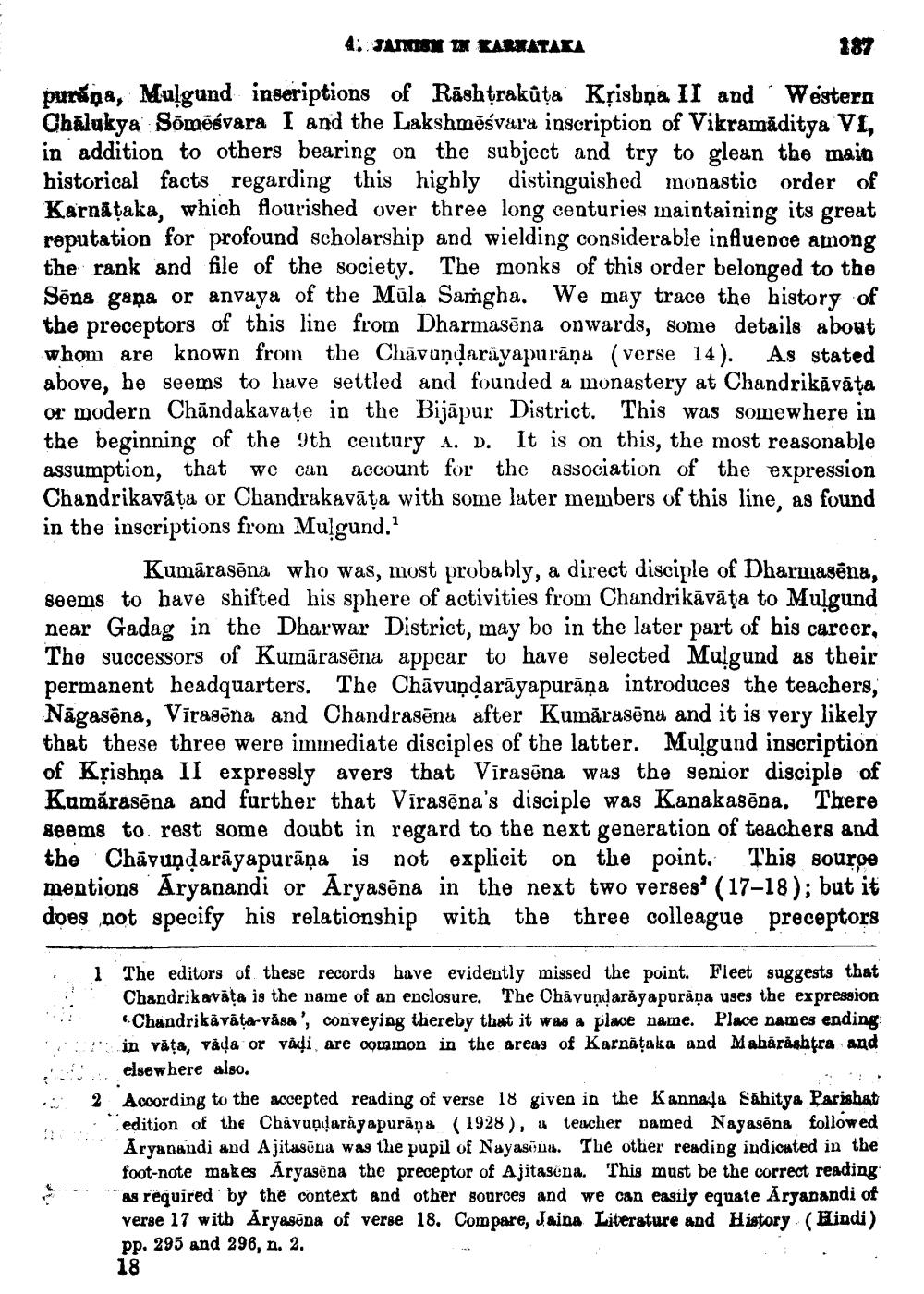________________
4: JAIMION 1 KARNATAKA
187 purána, Mulgund inseriptions of Rashtrakůta Krishna II and Western Chalukya Sõmēsvara I and the Lakshmēśvara inscription of Vikramăditya VL, in addition to others bearing on the subject and try to glean the main historical facts regarding this highly distinguished monastic order of Karnataka, which flourished over three long centuries maintaining its great reputation for profound scholarship and wielding considerable influence atnong the rank and file of the society. The monks of this order belonged to the Sēns gana or anvaya of the Müla Samgha. We may trace the history of the preceptors of this line from Dharmasēna onwards, some details about whom are known from the Chāvundarāyapurāņa (verse 14). As stated above, he seems to have settled and founded a monastery at Chandrikāvāța of modern Chāndakavațe in the Bijāpur District. This was somewhere in the beginning of the 9th century A. 1. It is on this, the most reasonable assumption, that we can account for the association of the expression Chandrikavāta or Chandrakavāța with some later members of this line, as found in the inscriptions from Mulgund."
Kumārasõna who was, most probably, a direct disciple of Dharmasõna, seems to have shifted his sphere of activities from Chandrikāvāta to Mulgund near Gadag in the Dharwar District, may be in the later part of his career. The successors of Kumārasēna appear to have selected Mulgund as their permanent headquarters. The Chāvuņdarāyapurāņa introduces the teachers, Nāgasõna, Viragāna and Chandrasēng after Kumārasēnu and it is very likely that these three were immediate disciples of the latter. Mulgund inscription of Křishna II expressly avers that Virasõna was the senior disciple of Kumărasēna and further that Virasēna's disciple was Kanakasēna. There seems to rest some doubt in regard to the next generation of teachers and the Chāruņdarāyapurāņa is not explicit on the point. This sourpe mentions Aryanandi or Aryasēna in the next two verses' (17–18); but it does not specify his relationship with the three colleague preceptors
1
2
The editors of these records have evidently missed the point. Fleet suggests that Chandrikavāta is the name of an enclosure. The Chāyundară yaparāņa uses the expression
Chandrikāvātar-văsa', conveying thereby that it was a place name. Place names ending in văța, våva or vådi, are common in the areas of Karnāțaka and Maharashtra and elsewhere also. According to the accepted reading of verse 18 given in the Kannada Sahitya Parishat edition of the Chāvundarayapurāņa (1928), u teacher named Nayasēns followed Aryanandi and Ajitasõna was the pupil of Nayasēna. The other reading indicated in the foot-note makes Aryasīna the preceptor of Ajitasēna. This must be the correct reading as required by the context and other sources and we can easily equate Aryapandi of verse 17 with Aryasõna of verse 18. Compare, Jaina Literature and History (Hindi) pp. 295 and 296, n. 2.
18




